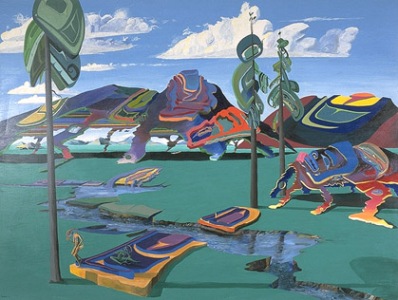World Views Information
World Views
Introduction to Worldviews
The First Nations World View
People from different cultures have different ways of seeing, explaining and living within the world. They have different ideas about what things are most important, which behaviors are desirable or unacceptable, and how all parts of the world relate to each other. Together, these opinions and beliefs form a worldview, the perspective from which people perceive, understand and respond to the world around them.
People from the same culture tend to have similar worldviews. A culture’s worldview evolves from its history, which is the collective experience of the people within the culture over all the years of its existence. It also includes their beliefs about origin and spiritualism.
The traditional world view of First Nations and Inuit peoples in Canada differ from the worldviews of people with a non-Aboriginal ancestry. You might compare a First Nations or Inuit worldview to a Euro-Canadian worldview by drawing a circle and a line. The circular First Nations worldview focuses on connections between all things, including the visible physical world and the invisible spiritual world. It sees time as always a cycle of renewal that links past and present and future. In contrast, a linear Euro-Canadian worldview lays out separations between elements of existence (spiritual and material, life and death, animal and human, living and non-living) and sees time as a progression from point to point.(Aboriginal Perspectives 2004, 66-67)

Lawerence B. Paul
Perhaps one of the biggest differences between the two world views is the attitude toward the environment. A vital lesson still to be learned in the developed world is that the Earth, its atmosphere and its waters belong to all people. According to Ken Goodwill, Sioux spiritual leader and lecturer at the First Nations University of Canada, Aboriginal peoples have a unique relationship with their Earth Mother, and they relate all human activities to the Earth Mother. The cultures of Aboriginal peoples are holistic; that is, they are totally integrated in their connection to the Earth Mother. Many First Nations peoples believe that they come from the womb of the Earth itself. For example, when the Sioux refer to “all their relations,” they
refer to all living things, be they animal or plant. Further, all things, animate and inanimate, possess spiritual significance.
There is no single worldview common to all First Nations, Métis and Inuit individuals. In learning about traditional First Nations and Inuit worldviews, however, it is possible to identify several similarities between many First Nations peoples’ cultures. Five strong threads that are common in Aboriginal world view are:
- a holistic perspective,
- the interconnectedness of all living things,
- connections to the land and community,
- the dynamic nature of the world
- the strength of “power with” rather than “power over.”
The image for this concept is a circle, in which all living things are equal. “Power with” is a dialogue during which everyone stands face to face (Alberta Education 2005, 13).